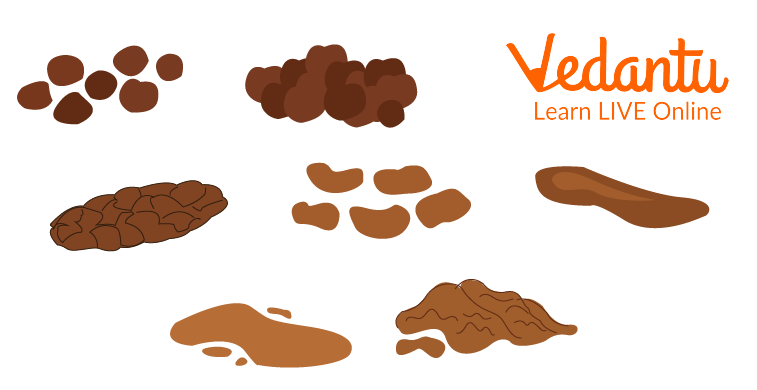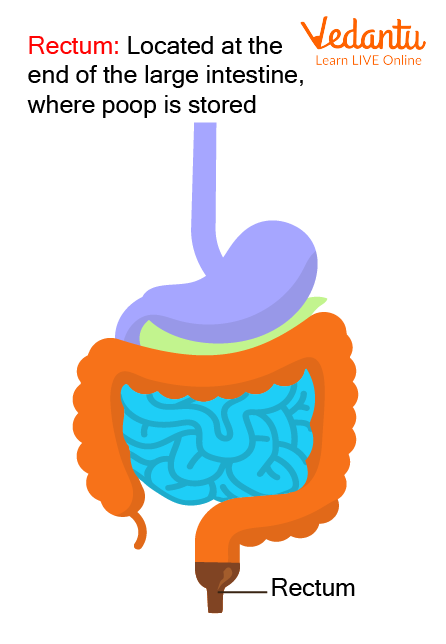




The Science Behind Poop Storage: Functions and Facts for Students
Have you ever been taught the importance of passing your poop out every single day for good gut health? Maybe yes, because the very first etiquette being taught to children is potty sitting and cleansing their body out by means of removal of their stools or poop.
Poops or stools are the waste materials that are left unabsorbed by our body after complete digestion of the food we ate. Poop, in scientific terms, is called faeces which is a word of Latin origin meaning dregs of the most wasteful or unuseful part. Poop contains around 75% water, according to a 2015 analysis.
Even though the intervals between bowel movements can differ from person to person, regular bowel movements are crucial for a healthy digestive tract. When the desire strikes, people ought to try to poop. They shouldn't put off or overly force a bowel movement because doing so can cause issues.

Poop Profile
Where is Poop Stored?
Poops or undigested food is usually stored in the last segment of the digestive tract, which is the large intestine called the rectum which is then passed out through the anus guarded by muscular walls.
Poop or the waste left at last after digestion is passed through the colon by means of peristalsis (the muscular movement of the alimentary canal), firstly in a liquid state and then is solidified till it reaches the rectum.
As the poop passes through the colon, water is removed from it which means that the poop gets concentrated while it travels down our digestive tract. This Poop or the stools are stored in the colon until a "mass movement" empties it into the rectum and is removed through the anus once or twice a day. It generally takes about 34-36 hours for the poop to get through the colon. The poop mostly consists of food debris and some bacteria which are present in the duct and help in digestion.
These bacteria are called “good” bacteria and perform various useful functions inside the body, such as synthesis of various vitamins, processing of waste products and food particles, and also providing protection against harmful disease-causing bacteria.

Location of the Rectum in the Large Intestine
The anal opening is guarded by sphincter muscles that are important for control. The internal sphincter is mostly closed till the time poop enters the rectum. This prevents us from pooping involuntarily or without any control. Whereas the external sphincter allows us to control our faeces till we reach the bathroom.
In addition to this mechanism, passing of stools is controlled by the nervous system too. The nerves attached to the walls of the rectum send impulses to the brain, and then the brain causes contraction, due to which poop is finally passed out on the other hand when the pressure on the walls of the rectum is removed it sends a positive feedback to the brain and the nervous system and the sphincters relax.
This was about how and where the poop is stored and travels before it gets flushed out. Now let's take a look at the various kinds of poops one may face during their lifetime and what they specify.
Every Poop is Different (Poop Profile)
A normal poop should be of a firm yet soft consistency, brown in colour and a couple of inches in length. Poops may vary in colour (brown, green, yellow, red) or can also be different in consistency. Any variation from normal can be an indicator of any disease or digestive problems. The various kinds of poops are as follows.
Anyone who observes a significant change in their faeces or in the frequency of their bowel movements, however, that has no apparent reason or does not go away in a short period of time should see a doctor. Such alterations may occasionally be a sign of a health problem.
Let's look at the various kinds of poop profiles and learn what they are usually indicative of:
1. Pellets
This type of poop is hard and separates little pellets that look like nuts or little stones and are hard and painful to pass. These little pellets are a typical indicator of constipation.

Pellets
2. Caterpillar
It is Log-shaped or rod-shaped with lumps which is again an indicator of constipation that shouldn’t happen very frequently. Drinking wter and taking fibrous diet can help in correcting the problem.

Caterpillar Poop
3. Hot Dog
It is the usual and most standardised form of poop which is Log-shaped along with some cracks on its surface which is normal to pass out.

Standard Poop
4. Amoebas (Amoeba Like)
These are small like pellets, kind of watery and easily removable, irregularly shaped poop. It indicates that one lacks fibre in their diet.

Amoeba Poop
5. Watery
It is completely watery with no solid lumps. It is an indicator of diarrhoea which further is an indicator of digestive disorder.

Watery Diarrhoea
Summary
Pooping is a vital biological process that clears the digestive tract of waste and creates room.Poop is a wasteful product in the body that, if retained for longer than usual, can be harmful to our bodies. It is very essential to be removed after a healthy gut has absorbed every nutrient from it. Analysis of one's poop is also essential to prevent ourselves from various problems.
For a variety of reasons, pooping may feel nice. For instance, the movement of the bowels requires the contraction and relaxation of specific muscles as well as the stimulation of specific neurons. When stimulated, some of these nerves produce delightful sensations. This was all about where poop is stored and all the related information summed up at one place. Now to check your knowledge lets look at some related frequently asked questions.
FAQs on Where Is Poop Stored in the Human Body?
1. Where is poop stored in the body before it comes out?
Poop, or stool, is temporarily stored in the rectum. The rectum is the final section of the large intestine. When the rectum gets full, it sends a signal to your brain that it's time to go to the toilet.
2. What is the journey of food before it becomes poop?
The journey of food turning into poop involves several steps:
- First, food is chewed and goes to the stomach to be broken down.
- Next, it moves to the small intestine, where the body absorbs all the useful nutrients.
- The leftover waste then travels to the large intestine, where water is removed, turning the waste solid.
- This solid waste, now called poop, is stored in the rectum until it's ready to leave the body.
3. What is the difference between the large intestine and the rectum?
The large intestine and the rectum work together but have different jobs. The main role of the large intestine is to absorb water and form solid waste (poop) from undigested food. The rectum is the final part of the large intestine and acts as a temporary storage space for this poop.
4. Why is poop usually brown?
Poop gets its typical brown colour from a substance called bilirubin. Bilirubin is formed when old red blood cells are broken down in the liver. It mixes with the waste material in your intestines and gives it a brown shade.
5. What happens to poop when a person is constipated?
During constipation, poop moves very slowly through the large intestine. This allows the intestine to absorb too much water from it. As a result, the poop becomes hard, dry, and difficult to pass out from the rectum.
6. Is it true that there is always some poop inside our body?
Yes, for the most part, there is always some waste material moving through your digestive system. Your body is constantly processing food, so as waste is passed out, new waste is being formed in the large intestine. The colon is rarely ever completely empty.
7. How can we help our body get rid of poop more easily?
To help your body pass poop easily and stay regular, you should:
- Drink plenty of water.
- Eat foods high in fibre, such as fruits, vegetables, and whole grains.
- Stay active and get regular exercise.
- Listen to your body and go to the toilet when you feel the urge.
8. Why is it important to have a regular pooping habit?
A regular pooping schedule is a sign of a healthy digestive system. It shows that your body is effectively removing waste products. Being regular helps prevent discomfort, bloating, and problems like constipation, keeping your gut working smoothly.
9. Are the bacteria found in poop harmful?
Inside your gut, many bacteria are actually helpful; they are known as 'good bacteria' and they help with digestion. However, once bacteria leave the body in poop, they can cause illness if they get on your hands or in your food. This is why it is extremely important to wash your hands with soap and water after using the toilet.









